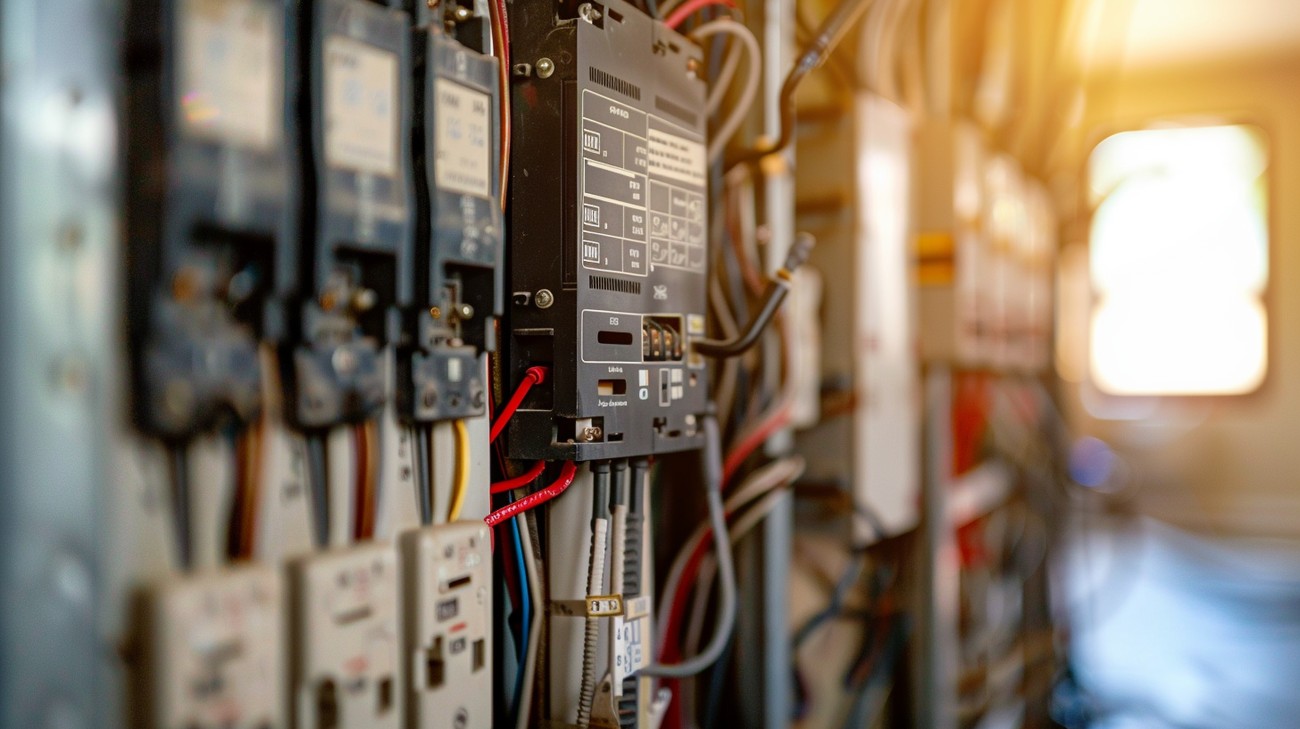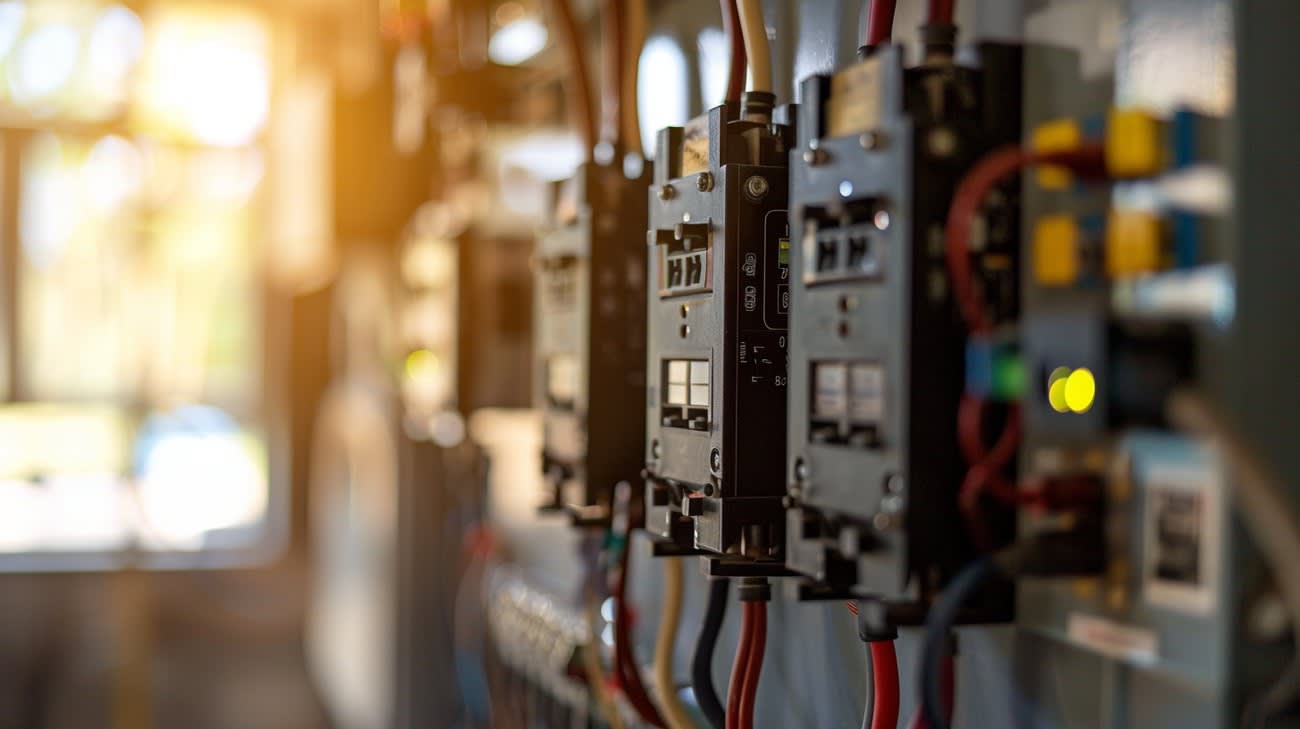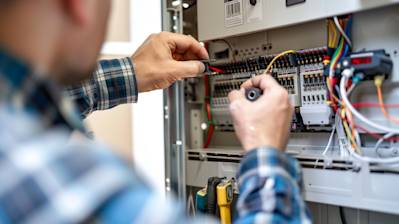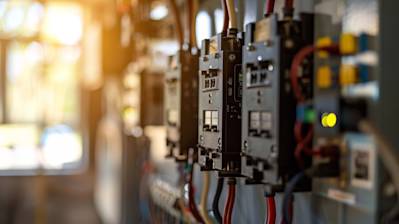Circuit breakers play a critical role in ensuring the safety and efficiency of electrical systems. However, despite their robust functionality, issues can arise that may disrupt the electrical flow and potentially lead to hazardous situations. Understanding these circuit breaker issues, their causes, and how to address them is crucial for maintaining a safe home or workplace. This guide provides a comprehensive look into common circuit breaker issues, their symptoms, and solutions, helping you ensure optimal performance of your electrical systems.
Understanding Circuit Breaker Basics
Before diving into the specific issues, it's essential to grasp the basics of how circuit breakers function. They are designed to protect electrical circuits from damage caused by overcurrent or short circuits. By automatically halting the flow of electricity when current levels exceed safe limits, circuit breakers protect wiring systems and reduce the risk of fires.
Circuit breakers come in various types and are rated for different voltages and currents, allowing them to efficiently manage diverse electrical needs. Now, let's explore the common issues that can affect their functionality.
Common Circuit Breaker Problems
Breaker Tripping Frequently
One prevalent issue homeowners and businesses encounter is frequent breaker tripping. This problem can be attributed to several causes, including overloading, short circuits, and ground faults.
- Overloading: Occurs when too many devices run simultaneously on the same circuit. The current demand exceeds the breaker's capacity, triggering a trip.
- Short Circuits: Happen when a live wire comes into contact with a neutral or ground wire, generating high current flow.
- Ground Faults: Similar to short circuits, these involve a live wire making contact with a grounded part of the system, often causing tripping.
Breaker Won't Remain Reset
Resetting a breaker only for it to trip immediately is another frequent issue. This behavior usually indicates either a persistent underlying problem or a faulty breaker.
- Persistent Overload or Fault: Continuous tripping after reset might point to unresolved overloads or faults within the system.
- Faulty Breaker: If no faults are present, the breaker itself could be failing and may require replacement.
Identifying Symptoms of Circuit Breaker Problems
Recognizing symptoms early can prevent further complications and enhance safety. Here are some signs suggesting circuit breaker troubles:
- Burning Smell: A persistent burning odor near the breaker panel can indicate overheating or an electrical fire risk.
- Visible Damage: Noticeable physical damage like burnt spots, discolored wires, or melted materials around the breaker.
- Sizzling Sound: Unusual noises, such as buzzing or sizzling, may indicate internal issues within the breaker.
Troubleshooting and Solutions
When dealing with circuit breaker issues, safety should always be the top priority. Here’s how to tackle some common problems safely:
Initial Safety Measures
- Turn off the main power switch before starting any work on the breaker panel to avoid electric shock.
- Use insulated tools and wear rubber-soled footwear to minimize risk.
Steps to Troubleshoot
- Inspect the Load: Examine the devices connected to the circuit. Unplug unnecessary devices and distribute the load evenly across other circuits.
- Check for Overload: Calculate the load on the circuit. If it exceeds the breaker's capacity, redistribute the load by adding more circuits.
- Test the Breaker: Replace the suspected faulty breaker with one of the same rating.
- Examine for Short Circuits and Ground Faults: Use a multimeter to check for continuity and test faults between wires.
Circuit Breaker Replacement
Replacing an old or faulty breaker is sometimes the best option. While it’s a straightforward task, hiring a licensed electrician is advisable to ensure proper installation and compliance with local codes.
Tips for Preventing Future Breaker Issues
- Regularly check outlets and fixtures for signs of wear or damage.
- Avoid overloading circuits by balancing loads across multiple breakers.
- Schedule routine inspections with a professional electrician to identify potential issues before they escalate.
- Upgrade outdated or insufficient electrical systems to meet the demands of modern appliances.

Circuit Breaker Issues: Frequently Asked Questions
Why is my circuit breaker tripping repeatedly?
When a circuit breaker trips repeatedly, it indicates that the electrical circuit is drawing more current than it can safely handle. Common causes for this issue include overloaded circuits, faulty appliances, or a short circuit. It's crucial to investigate the root of the problem by unplugging devices and resetting the breaker. If the issue persists, consult a licensed electrician to assess and resolve potential risks to your electrical system.
How do I reset a tripped circuit breaker?
To reset a tripped circuit breaker, locate your breaker panel and identify the switch that has moved to the off or middle position. Firmly flip the switch towards the off position, then back to the on position. This should restore power, but make sure to check for any overloads or issues with appliances that might have caused the breaker to trip.
What should I do if my circuit breaker won't reset?
If your circuit breaker won't reset, first ensure all appliances on that circuit are unplugged. Attempt to reset the breaker again. If it still doesn't reset, there may be a more severe electrical problem, such as a short circuit or faulty wiring. It's essential to contact a professional electrician to inspect the situation and ensure there is no risk of safety hazards, such as electrical fires.
Can a faulty circuit breaker cause electrical problems?
Yes, a faulty circuit breaker can cause various electrical problems. It may fail to trip in response to an overload, leading to overheating and potentially causing electrical fires. It could also trip too easily, leading to frequent power interruptions. If you suspect your breaker is malfunctioning, it's important to have it evaluated and replaced by a qualified electrician if necessary.
What are the signs of a bad circuit breaker?
Signs of a bad circuit breaker include frequent tripping without an apparent cause, burning smell near the panel, scorch marks or melted wires, or a breaker that feels hot to the touch. Any of these symptoms warrant immediate inspection by a professional to prevent potential safety hazards, such as electrical fires.
Can I replace a circuit breaker myself?
Replacing a circuit breaker can be risky and is generally not recommended unless you have experience with electrical work. Handling electrical panels requires specialized knowledge due to the risk of electrical shock or fire. It's safer and often legally required to hire a certified electrician to ensure the replacement is done safely and up to code.
How long do circuit breakers last?
Circuit breakers are designed to last many years, with an average lifespan of about 30 to 40 years. However, their lifespan can vary depending on usage, quality, and environmental conditions. Regular maintenance checks can help ensure your breaker is functioning correctly for its expected lifetime. If you notice signs of wear or recurring issues, it may be time for a replacement.
What causes a circuit breaker to get hot?
A circuit breaker can become hot due to overload, excessive current draw, or internal faults. A hot breaker is a serious concern and can be a precursor to electrical fires. If you notice your circuit breaker is hot to the touch, it's crucial to stop using the circuit and have an electrician inspect the system immediately.
Why does my circuit breaker keep buzzing?
A buzzing sound from a circuit breaker panel often indicates arcing or failure to trip properly under load, which can be hazardous. This noise signifies that the breaker might not be serving its protective purpose effectively. Immediate attention from a qualified electrician is needed to determine the cause and rectify the issue to maintain safety.
Is it normal for circuit breakers to make noise?
While a low humming noise can be normal due to electrical currents, loud or unusual noises such as buzzing or crackling indicate a problem. These sounds can signify arcing, a loose wire, or an internal defect within the breaker. Prompt inspection and maintenance by an electrician are necessary to prevent further damage or potential fire hazards.

Troubleshooting Guide
1. Tripped Circuit Breaker
Symptoms: Sudden loss of power in specific areas of your home, a breaker switch that's flipped to the "off" position.
Likely Causes: Overloaded circuit, short circuit, or a ground fault.
Step-by-step Fixes:
- Check your breaker panel and locate the tripped breaker.
- Turn off or unplug devices connected to the affected circuit.
- Flip the breaker fully to "off" and then switch it back to “on”.
- Reconnect devices one at a time to ensure no single device is causing the overload.
When to Call a Professional: If the breaker trips repeatedly despite unplugging devices, it’s time to call in a pro.
Prevention Tips: Avoid using too many high-wattage devices on the same circuit. Spread your appliances across different circuits if possible.
2. Breaker Won’t Stay Reset
Symptoms: Breaker continually trips or won’t remain in the "on" position.
Likely Causes: Persistent overload, short circuit, or faulty breaker.
Step-by-step Fixes:
- Identify devices or appliances recently added that may be causing the problem.
- Unplug these and attempt to reset the breaker.
- If the issue persists, the breaker or wiring might be at fault.
When to Call a Professional: Call an electrician if unplugging devices doesn't solve the issue or if you're uncomfortable checking the circuit wiring.
Prevention Tips: Regularly test breaker functions and keep track of additional appliances that are added to your home.
3. Flickering Lights
Symptoms: Lights dim or flicker intermittently when appliances are on.
Likely Causes: Loose lightbulbs, overloaded circuit, or faulty wiring connections.
Step-by-step Fixes:
- Start by tightening any loose light bulbs.
- Reduce the number of devices operating on the same circuit.
- Check sockets and connections for visible issues.
When to Call a Professional: Persistent flickering needs professional attention as it could indicate deeper electrical issues.
Prevention Tips: Use energy-efficient LEDs to minimize load and regularly inspect all visible light connections.
4. Burning Smell or Burn Marks
Symptoms: Unusual burning smell around the breaker panel or visible burn marks.
Likely Causes: Overheated wires or connections, faulty breaker, or incorrect wiring.
Step-by-step Fixes:
- Immediately cut power to the affected area if safe.
- Inspect the breaker and panel for visible signs of damage.
- Do not touch any exposed wires.
When to Call a Professional: Always. This is a serious issue requiring immediate professional assessment.
Prevention Tips: Keep an eye out for unusual smells and regularly maintain all electrical installations.
5. Breakers Making Noise
Symptoms: Humming or buzzing sounds coming from the breaker box.
Likely Causes: Loose wires, overloaded breaker, or a failing breaker.
Step-by-step Fixes:
- If comfortable, tighten any screws and wire connections inside the panel.
- Reduce the electrical load on the breaker.
- Listen for which breaker specifically makes the noise and avoid using it until checked.
When to Call a Professional: If noise persists after load reduction and tightening, a professional needs to inspect the system.
Prevention Tips: Regular maintenance checks can catch loose connections before they become problematic.
6. Breaker Does Not Trip
Symptoms: Circuit fails to trip despite apparent overload, causing appliances to malfunction.
Likely Causes: Faulty breaker or miscalibrated breaker.
Step-by-step Fixes:
- Test the breaker by manually turning it off and on.
- Disconnect all devices from the circuit to reduce load.
- Monitor for ongoing issues.
When to Call a Professional: Have an electrician replace the breaker to ensure it trips as needed for safety.
Prevention Tips: Routinely test breakers to ensure they are operating correctly, and replace old breakers as part of regular electrical maintenance.
7. Inconsistent Power
Symptoms: Power randomly turns off and back on in certain areas. Likely Causes: Loose connections, faulty wiring, or defective breaker. Step-by-step Fixes: When to Call a Professional: Intermittent power can indicate significant wiring issues or a failing breaker panel.

Common Mistakes to Avoid
Misinterpreting a Tripped Breaker
A common mistake is assuming a tripped circuit breaker means it's faulty. This usually happens because people are unaware of the breaker's function as a safety device. It trips to prevent excess current, protecting your home from electrical hazards.
How to avoid it: Understand the purpose of circuit breakers. Keep a manual handy or label your circuit box clearly to identify what each breaker manages.
What to do if you've already made the mistake: If you've replaced a breaker unnecessarily, ensure the original was not damaged during the process, and investigate the actual electrical issue, such as an overloaded circuit or a short.
Expert recommendation: Regularly check your electrical system for underlying issues like overloads, particularly if tripped breakers occur frequently.
Overloading Circuits
Many people inadvertently overload circuits by plugging too many appliances into a single outlet, which can lead to a tripped breaker and potential fire hazards. This often happens due to a lack of awareness of the electrical load capacity.
How to avoid it: Familiarize yourself with the load capacity of your circuit and distribute your appliances accordingly. Use a power strip with a built-in circuit breaker for additional safety.
What to do if you've already made the mistake: Reduce the load on the affected circuit immediately. Consider consulting an electrician to assess if an upgrade is necessary for your electrical system.
Expert recommendation: Conduct an assessment of your home’s electrical demand and update circuits if they frequently trip under normal use.
Ignoring Warning Signs
Sometimes people ignore warning signs like flickering lights or buzzing sounds, assuming they're just quirks of the system. This can lead to serious electrical issues.
Why this happens: Often, these anomalies are dismissed as nuisances rather than indicators of a problem.
How to avoid it: Treat any irregularities in your electrical system seriously. Investigate strange sounds, smells, or lighting behavior promptly.
What to do if you've already made the mistake: If you notice overlooked warning signs and subsequently have breaker issues, call a professional electrician to conduct a thorough check.
Expert recommendation: Implement regular electrical inspections to catch potential issues before they become critical.
DIY Repairs Without Proper Knowledge
Attempting to fix circuit breakers without adequate knowledge or tools can compound problems or cause injury. Often, people overestimate their DIY skills.
How to avoid it: Leave electrical work to the experts unless you're thoroughly versed in it. It’s best to get a qualified electrician.
What to do if you've already made the mistake: If you've attempted a DIY fix and it's gone wrong, stop using the affected circuit and contact a professional immediately.
Expert recommendation: Take a basic electrical course if you frequently do home repairs. This will help you understand your limits and know when to call a professional.
Using the Wrong Circuit Breaker
Installing a wrong type or rating of a circuit breaker is a mistake that can lead to frequent tripping or, worse, fail to protect the circuit. This often happens due to misidentification or assumptions during DIY installations.
How to avoid it: Always check electrical specifications and compatibility before purchasing a breaker. Consult an expert if unsure.
What to do if you've already made the mistake: Replace the wrongly installed breaker with the correct type as soon as possible to safeguard your electrical system.
Expert recommendation: Keep a record of your electrical setup, including the types and ratings of breakers, to ensure accurate replacements and repairs.
Neglecting Regular Maintenance
Some homeowners overlook the need for regular maintenance of their electrical systems. This oversight can lead to degradation of components and unexpected failures. How to avoid it: Schedule routine check-ups with a licensed electrician. Maintenance is key to preventing and identifying potential problems early. What to do if you've already made the mistake: Begin a maintenance schedule immediately. Address any issues found during your first check-up promptly.
Final Thoughts
Understanding circuit breaker issues is crucial for maintaining a safe and efficient electrical system in your home. By staying vigilant about the signs of trouble, such as frequent tripping or buzzing noises, you can address potential problems before they escalate into larger safety hazards. Keeping your electrical system in good shape not only protects your home's wiring but also ensures peace of mind for you and your family.
If you’re experiencing any of these circuit breaker issues or have concerns about your electrical system’s performance, our team at Sagan Electric is here to help. We serve homeowners in Sacramento, CA, and are ready to provide expert advice and solutions tailored to your needs. Don’t hesitate to reach out to us for a thorough inspection or to schedule a consultation—your safety is our top priority, and we’re committed to keeping your home’s electrical system running smoothly.
Tags: electrical, troubleshooting, maintenance,








